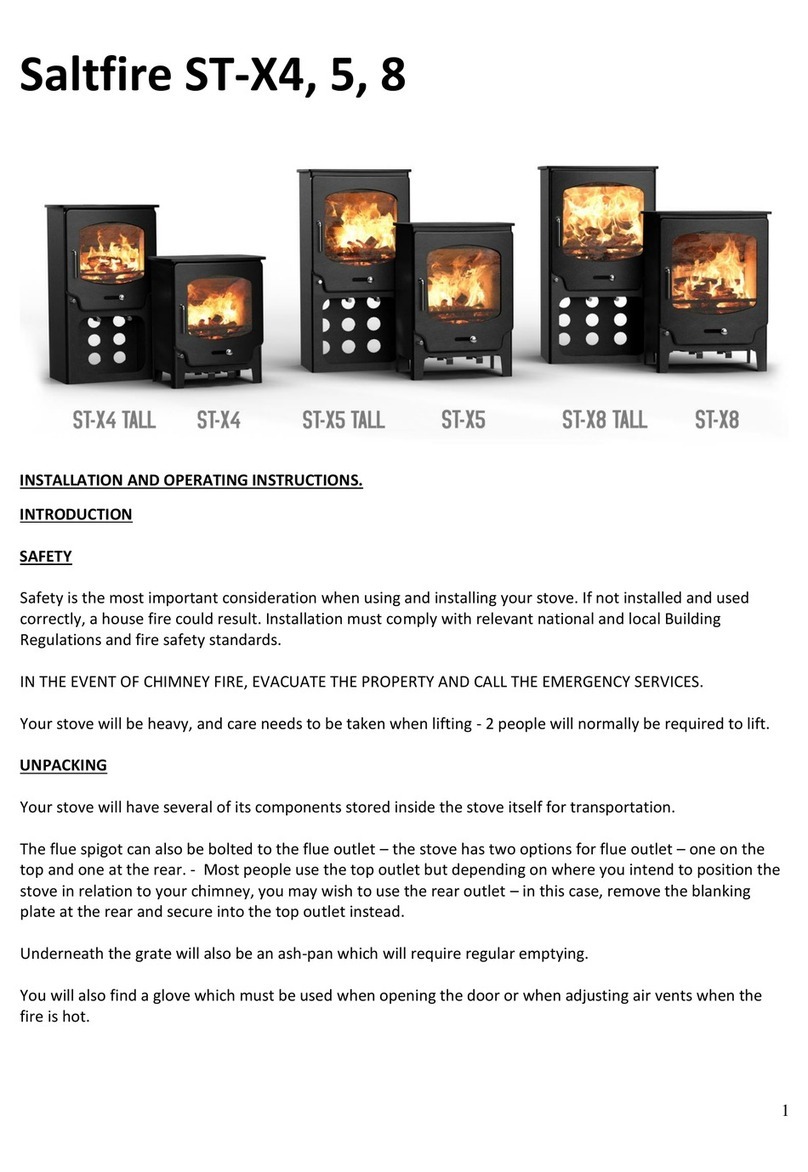9
3) Once removed, brush the baffle using a stiff brush or wire brush to remove any deposits. Clear any debris from the
upper parts of the stove above where the baffles normally sit.
4) Inspect firebricks on both the sides, rear and base for cracks - (some are normal and not a fault. Nor are they
detrimental to the workings of the stove, however it is good practice to be aware as any develop and over time if they
worsen, they may need replacing). If you feel a crack in the firebrick is just cosmetically unsightly it can be filled with a
small amount of fire cement.
5) Vacuum or brush out the inner stove box thoroughly.
6) Visually check that the glass is still making a good seal against its rope on the inside of the door frame and that it’s
retaining clips remain firmly in place to the touch.
7) Check that the door is making a good seal with the body of the stove all around (over time the rope will flatten out
and loose some flexibility - when this happens and when it is no longer sealing fully all the way round, it needs to be
replaced). The rope size used here is a 10mm-Soft type.
8) Blemishes or scratches to the paintwork can be touched up using a suitable high temperature stove paint in
a spray can. Ensure the stove is cool and clean before applying and follow the paint manufacturer’s instructions. Contact
Saltfire Stoves directly if you are unsure which paint to use.
Throughout the season, it is good practice to keep the stove in generally good clean order which will prolong the life of
serviceable components and enhance the experience you have with your fire.
9) NEVER wipe the stove in the early stages (prior to paint fully curing), as the paint will be very soft and will damage
easily.
10) To keep the outer body clean, simply dust over with a clean soft duster when cold.
11) If there are marks which cannot be removed with a duster, use a slightly moistened cloth very gently, but only when
the stove is cool and has not been in use. Then pat dry with absorbent paper towel.
12) Regularly vacuum soot and dust from around the inside of the door and around the glass and rope seals.
13) If glass gets dirty on the inside from soot, clean with liquid ‘stove glass cleaner’ and a soft cloth OR with
an “Atmosfire Dry Wiper”, produced by Schott, (manufacturers of stove glass), and available online. Do this as
soon as possible once the soot appears, but only when the fire is completely cool. Never use newspaper or soot or any
other abrasive or cleaning method on the glass.
If the glass becomes stained from the inside, the air-wash vent may need opening more during use. (See
‘troubleshooting guide’for other possible causes).
The high temperature paint which your stove is finished in should last several years with normal use, but
when it does eventually require re-finishing, black heat resistant paint in spray cans can be purchased from
most hardware stores. –Do not use regular paint which is not high temperature resistant.
After prolonged periods of not using the fire, the stove and flue system should be checked for blockages prior
to re-lighting.
We recommend regular servicing and safety checks are carried out by a qualified engineer.
There must be no unauthorised modification of the appliance. Use only replacement parts recommended by
the manufacturer.




























